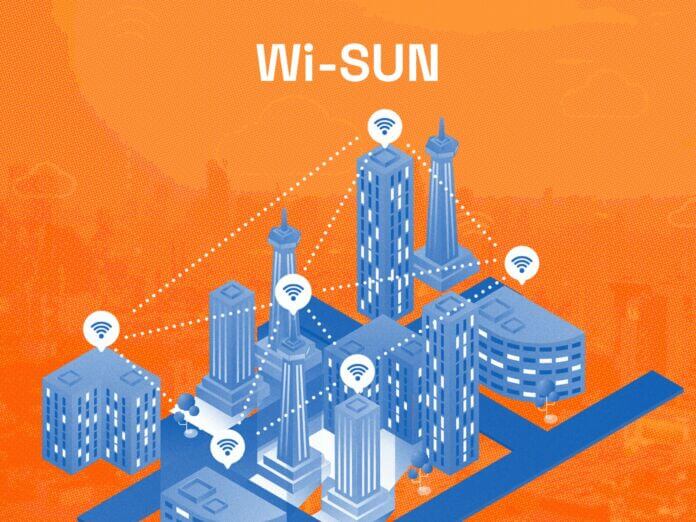
RF-star – August 1, 2024
Collected at: https://www.iotforall.com/wi-sun-the-future-of-secure-and-scalable-iot-wireless-networks
The digital revolution has brought the Internet of Things (IoT) into the fabric of our daily lives. Wi-SUN technology, celebrated for its robust performance and versatile applications, has become a favored option for large-scale IoT implementations.
Let’s explore the Wi-SUN technology market, its main benefits, use cases and applications, and RF-star’s implementation of Wi-SUN.
Wi-SUN Technology Market
Recent Technology Market Research Report by Business Research Insight and Market Research Future indicate that the global Wi-SUN technology market, valued at USD 319.27 million in 2022, is predicted to reach USD 14.568 billion at a whopping 13.45 percent CAGR between 2024-2032.
This surge is fueled by ongoing proliferation of smart meters, sensors, and IoT devices, as well as the accelerated digital transformation spurred by the COVID-19 pandemic. Notably, North America stands out as a region with significant adoption of Wi-SUN technology.

What is Wi-SUN?
Wi-SUN, or Wireless Smart Ubiquitous Network, is a wireless communication network based on the IEEE 802.15.4 standard. It delivers a high-performance, low-power, long-range, robust anti-interference, high data throughput, and highly secure wireless communication solution.
As a mesh network, it facilitates long-distance communication and high-data transmission between IoT devices through frequency-hopping and self-configuration technology. The network also features self-healing capability.
Wi-SUN: HAN vs. FAN
This technology supports two primary operational profiles: Home Area Network (HAN) and the Field Area Network (FAN):
HAN: Home Area Network
HAN currently has several types, including Router B and enhanced HAN (supporting relay transmission). Router B refers to the Home Energy Management System (HEMS) controller, connecting smart appliances and smart meters.
It monitors smart appliance energy use and communicates with FAN for smart city and home applications.
FAN: Field Area Network
Wi-SUN FAN is a mesh network allowing multiple device connections, scaling to thousands of nodes. Each node provides typical long-distance hops.
If an end-device fails, it reconfigures to an alternate path to the router node. This makes it ideal for large-scale infrastructure such as smart grids and streetlights. The Wi-SUN topology is illustrated below:

Benefits of Wi-SUN Network
- Low Latency and High Data Throughput: Wi-SUN’s mesh topology ensures low-latency, high-throughput communication for large-scale IoT deployments.
- Low Power Consumption: The devices typically use battery power, significantly reducing energy consumption and extending device life.
- Ease of Deployment and Scalability: Its straightforward network structure and support for self-forming networks make it an ideal choice for large-scale applications, with the flexibility to expand as the IoT ecosystem evolves.
- High Security: It offers multiple layers of security mechanisms, such as advanced authentication, to ensure the safety of data transmission.
- Interoperability: Based on the open standard IEEE 802.15.4, it supports data interoperability between end devices, enhancing overall network efficiency and application coverage.
- Cost-Effectiveness: By integrating self-forming and adaptive frequency hopping technologies, Wi-SUN reduces overall costs, particularly suitable for in a wide range of IoT applications.
- Wide Area Coverage: Using radio waves in the Sub-1GHz band (860MHz band, 920MHz band, and other bands below 1GHz), Wi-SUN offers longer reach and less radiofrequency interference with other electronic devices and obstacles. It is ideal for connecting utilities such as smart cities, smart homes, and energy management.
Applications
This technology is finding its place in various global applications:
Smart Cities
Wi-SUN’s long-distance transmission, scalability, bidirectional communication, and low power consumption have led to its deployment in many cities for smart meters and streetlights. For example, a Smart Cities Living Lab in Hyderabad, India, utilizes Wi-SUN mesh network technology to manage city assets efficiently.
Smart Streetlights
Wi-SUN technology supports large-scale outdoor IoT networks, including AMI metering and distribution automation, offering smart streetlight solutions for cities. In London, Wi-SUN mesh networks power streetlights, reducing maintenance costs and energy consumption while enhancing flexibility for aesthetic lighting and public safety.
Smart Meters
In smart cities, Wi-SUN technology enables real-time monitoring and management of electricity usage, optimizing energy distribution, and reduces consumption.
Solar Power Plants
Wi-SUN networks allow for real-time monitoring of solar panel operations through intelligent monitoring systems, ensuring maximum power generation efficiency while minimizing environmental impact.
Smart Low Voltage Cabinets
In smart grids, this technology is used to deploy smart low-voltage cabinets, dynamically adjusting power supply and optimizing power distribution to enhance grid reliability and flexibility.
Industrial Facilities
Wi-SUN technology is also applied in the industrial and manufacturing sectors, providing non-proprietary solutions that make deployment more scalable, flexible, and secure.
The Ideal Solution
Wi-SUN’s unique mesh network architecture, combined with its low latency, high data throughput, low power consumption, ease of deployment and scalability, high security, interoperability, and long-range transmission capabilities, makes it an ideal solution for wide-area large-scale IoT applications.
As the market for Wi-SUN continues to expand, its applications in smart cities, smart energy, and industrial IoT are growing, showcasing its potential to enhance connectivity efficiency, reduce costs, and improve user experience.
With manufacturers like RF-star leading the development of high-performance Wi-SUN modules, the future of large-scale distributed IoT deployments looks promising.

Leave a Reply